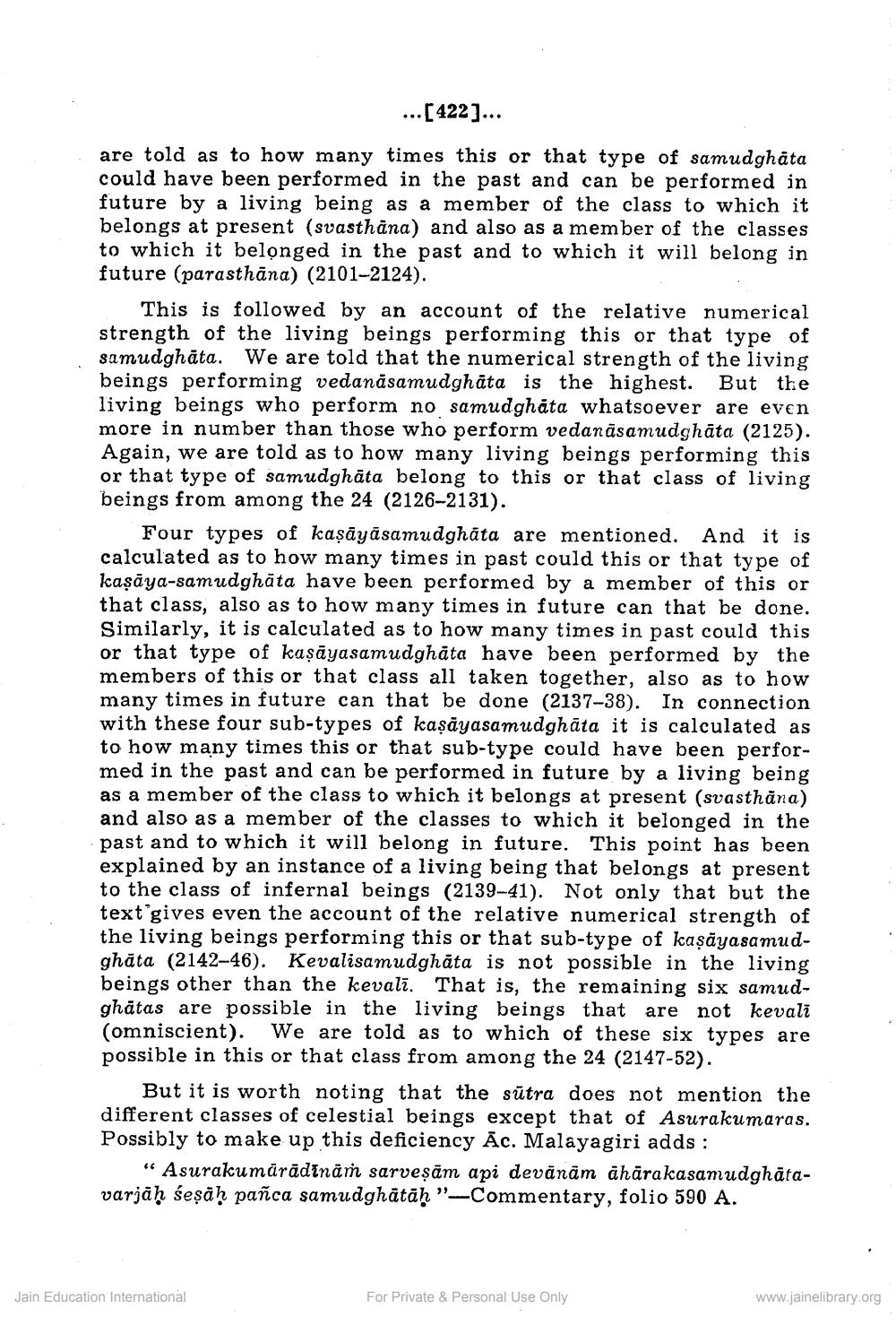________________
...[422]...
are told as to how many times this or that type of samudghata could have been performed in the past and can be performed in future by a living being as a member of the class to which it belongs at present (svasthāna) and also as a member of the classes to which it belonged in the past and to which it will belong in future (parasthāna) (2101-2124).
This is followed by an account of the relative numerical strength of the living beings performing this or that type of samudghāta. We are told that the numerical strength of the living beings performing vedanāsamudghāta is the highest. But the living beings who perform no samudghata whatsoever are even more in number than those who perform vedanāsamudghāta (2125). Again, we are told as to how many living beings performing this or that type of samudghāta belong to this or that class of living beings from among the 24 (2126-2131).
Four types of kaşāyāsamudghāta are mentioned. And it is calculated as to how many times in past could this or that type of kasaya-samudghāta have been performed by a member of this or that class, also as to how many times in future can that be done. Similarly, it is calculated as to how many times in past could this or that type of kaṣāyasamudghata have been performed by the members of this or that class all taken together, also as to how many times in future can that be done (2137-38). In connection with these four sub-types of kaşayasamudghāta it is calculated as to how many times this or that sub-type could have been performed in the past and can be performed in future by a living being as a member of the class to which it belongs at present (svasthāna) and also as a member of the classes to which it belonged in the past and to which it will belong in future. This point has been explained by an instance of a living being that belongs at present to the class of infernal beings (2139-41). Not only that but the text gives even the account of the relative numerical strength of the living beings performing this or that sub-type of kaşayasamudghăta (2142-46). Kevalisamudghāta is not possible in the living beings other than the kevalī. That is, the remaining six samudghātas are possible in the living beings that are not kevalī (omniscient). We are told as to which of these six types are possible in this or that class from among the 24 (2147-52).
But it is worth noting that the sūtra does not mention the different classes of celestial beings except that of Asurakumaras. Possibly to make up this deficiency Ac. Malayagiri adds :
" Asurakumärādināṁ sarveşām api devānām āhārakasamudghātavarjāḥ śeşāk pañca samudghātāḥ"-Commentary, folio 590 A.
DL
Jain Education International
For Private & Personal Use Only
www.jainelibrary.org




